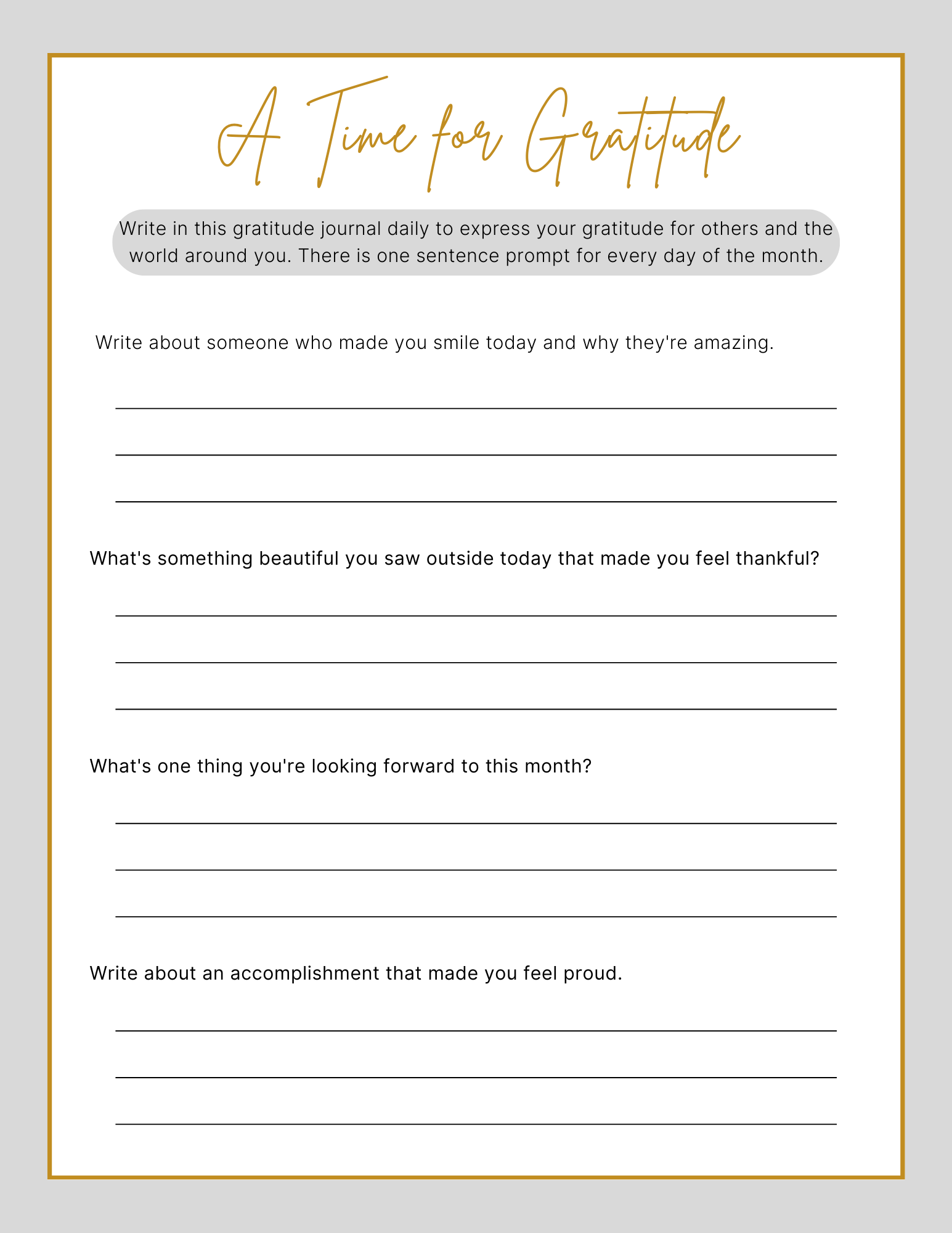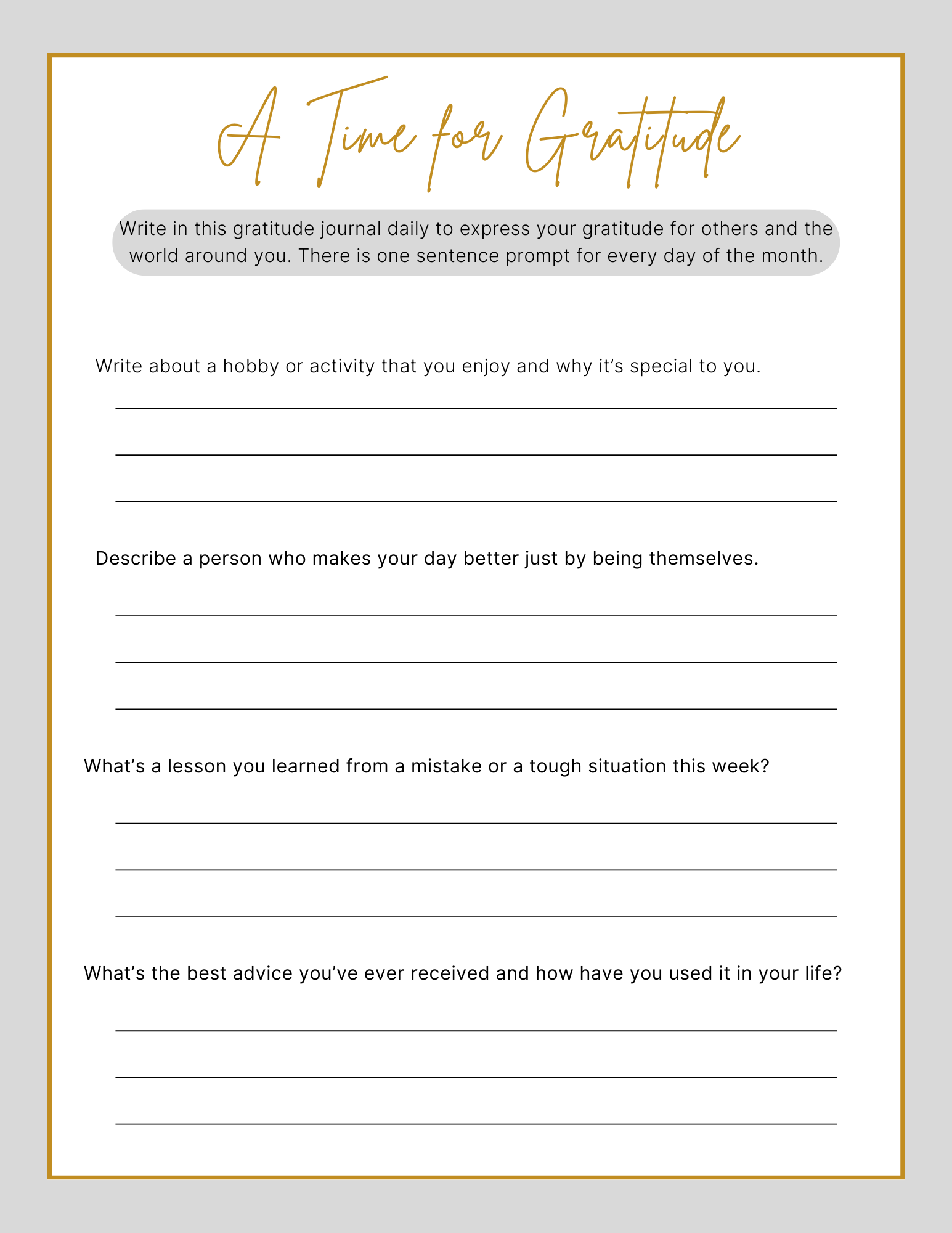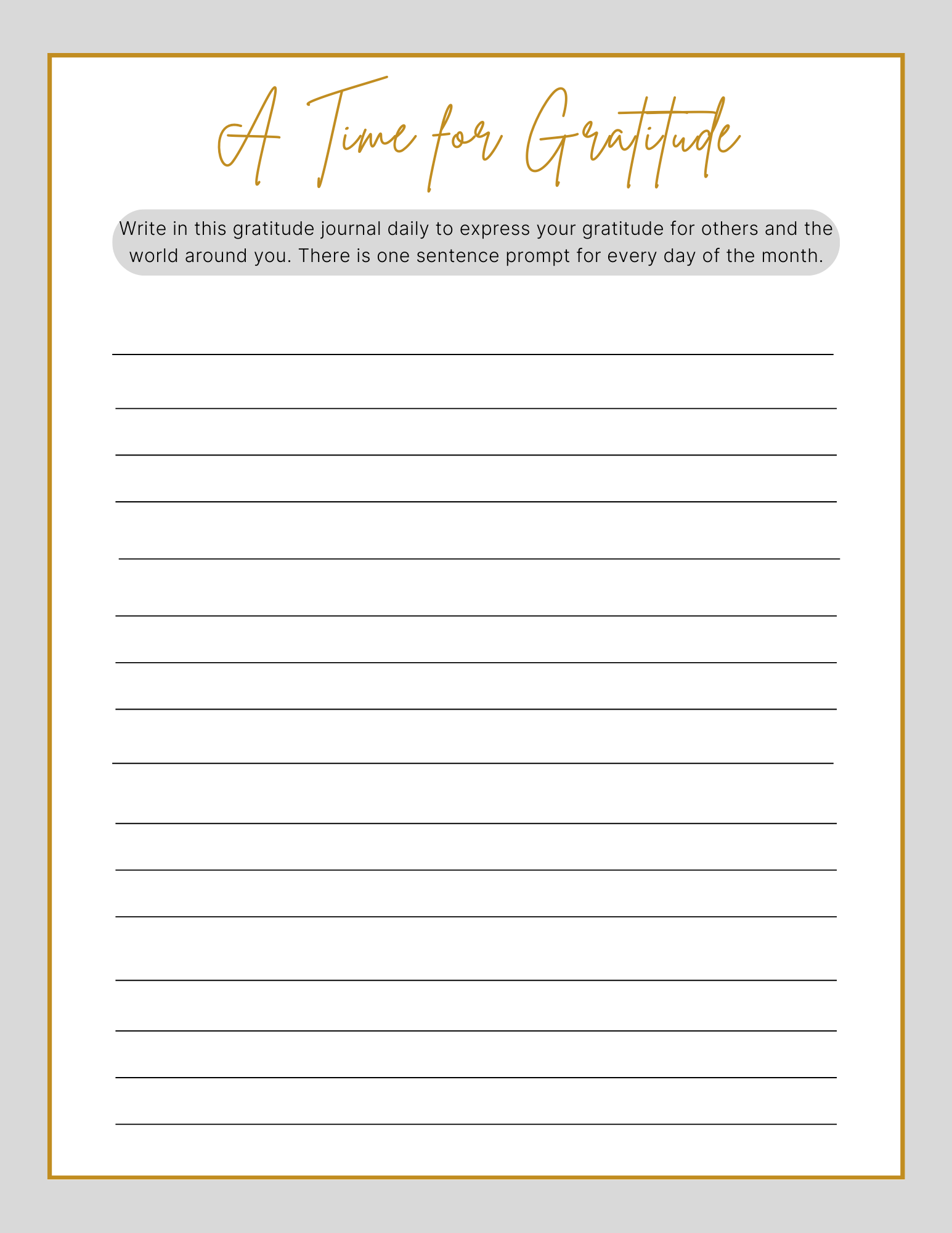Gratitude & Self-Care
It’s February-during the month of love, we wanted to emphasize how important it is to love yourself! Self-care is essential for everyone, from children to older adults. Self-care allows children to identify their physical and emotional needs, create healthy habits, increase independence, and create a foundation of healthy living mentally, physically, and emotionally to carry on into adulthood (Kids In The Middle, n.d.). Under the occupational therapy lens, self-care involves both basic activities, like showering or brushing your teeth, to more complex activities, like managing emotional health, rest, leisure, or socializing. While self-care activities can be easy to imagine as an adult, you may wonder, “What does self-care look like for kids?”
Self-Care Activities for Children
There are quite a few things that children can do to practice self-care.
Exercise or physical activity
Read/listen to a book or watch a movie
Get artistic through drawing, painting, coloring, or any other type of crafting
Get cozy and relax
Practice yoga, meditation, stretching, and breathing
Make a gratitude list, jar, or journal
Listen to music- sing, dance, laugh
Practice positive affirmations
Spend time with loved ones
Take care of your physical health- bath, brush your teeth, eat a meal, sleep
Spend time outside
It may seem obvious, but practicing self-care is great for your health. Practicing self-care can help you manage stress, lower your risk of illness, and increase your energy (National Institute of Mental Health (NIMH, n.d.) Creating a gratitude journal (as listed above) is a great option for practicing self-care. Gratitude journals have shown increased positive emotions, happiness, and life satisfaction while reducing negative emotions and depression symptoms (Cunha et al., 2019). There are a few ways to create a gratitude journal, but below are our recommendations on creating the most effective routine for your gratitude journal.
We know that beginning a gratitude journal may be a challenge. If you can’t think of anything to write, prompts may help. Below are some examples of prompts that can help you start writing, as well as a blank template once you feel more comfortable beginning by yourself. Available for FREE download on our site.
If you want to use this type of formatting for your child to use a gratitude journal, you can modify the prompts to be simpler. If it helps them, they can draw pictures instead of writing out answers as well. The below image can be a great option if your child needs something a little more basic, or just prefers to draw.
This exercise will help you or your kiddo develop a greater appreciation for the good in life. Gratitude journals allow us to pay attention to the good things in life we might otherwise take for granted. If you find yourself in a negative spiral or struggling to slow down and find the good things in life, beginning a gratitude journal is a great option. Try it out!
References
Cunha, L., Pellanda, L. C., & Reppold, C. T. (2019). Positive psychology and gratitude interventions: A randomized clinical trial. Frontiers in Psychology, 10. https://doi.org/10.3389/fpsyg.2019.00584
Kids In The Middle. (n.d.). Benefits of Self-Care for Kids. https://www.growingkids.com/child-care-goshen/self-care-tips-for-kids/
National Institute of Mental Health. (n.d.). Caring for Your Mental Health. https://www.nimh.nih.gov/health/topics/caring-for-your-mental-health#:~:text=Self%2Dcare%20means%20taking%20the,illness%2C%20and%20increase%20your%20energy.






